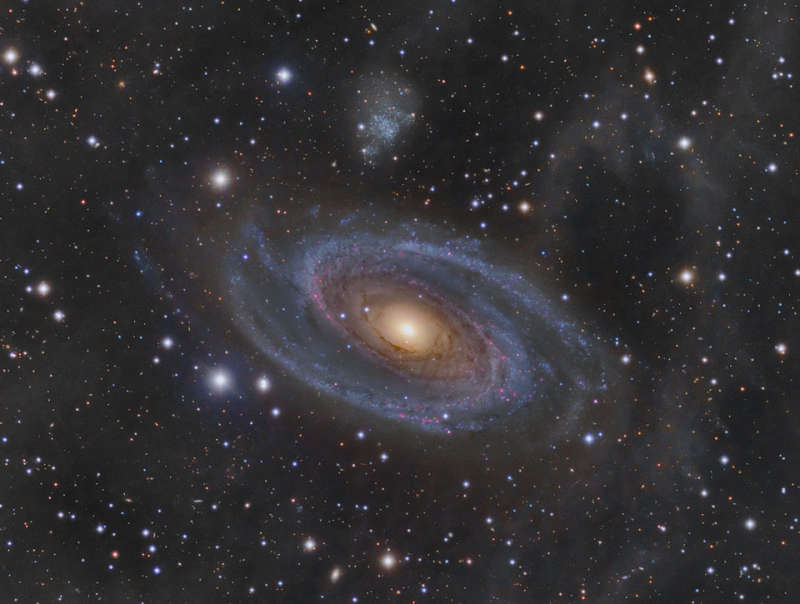Credit & Copyright: Bernard Miller
Explanation:
One of the brightest galaxies in planet Earth's sky is similar in size
to our Milky
Way Galaxy: big, beautiful M81.
This grand spiral galaxy lies 11.8 million light-years
away toward the northern constellation of the Great
Bear
(Ursa Major).
The deep image of the region reveals details in the bright yellow core,
but at the
same time follows fainter features along the galaxy's gorgeous blue
spiral arms and sweeping dust lanes.
It also follows the expansive, arcing feature, known
as Arp's loop, that seems to rise from the galaxy's disk at the upper right.
Studied in the 1960s, Arp's loop has been thought to be a
tidal tail,
material pulled out of M81 by gravitational interaction with its large
neighboring galaxy M82.
But a subsequent investigation
demonstrates that at least some of Arp's loop likely lies
within our own galaxy.
The loop's colors in visible and
infrared light
match the colors of pervasive
clouds of dust, relatively
unexplored
galactic cirrus only a few hundred light-years above the plane of the Milky Way.
Along with the Milky Way's stars, the dust clouds lie in
the foreground of this remarkable view.
M81's dwarf companion galaxy,
Holmberg IX,
can be seen just above the large spiral.
On the sky, this image spans about 0.5 degrees,
about the size of the Full Moon.
1999 2000 2001 2002 2003 2004 2005 2006 2007 2008 2009 2010 2011 2012 2013 2014 2015 2016 2017 2018 2019 2020 2021 2022 2023 2024 2025 |
Январь Февраль Март Апрель Май Июнь Июль Август Сентябрь Октябрь Ноябрь Декабрь |
NASA Web Site Statements, Warnings, and Disclaimers
NASA Official: Jay Norris. Specific rights apply.
A service of: LHEA at NASA / GSFC
& Michigan Tech. U.
|
Публикации с ключевыми словами:
spiral galaxy - пылевое облако - спиральная галактика
Публикации со словами: spiral galaxy - пылевое облако - спиральная галактика | |
См. также:
Все публикации на ту же тему >> | |
